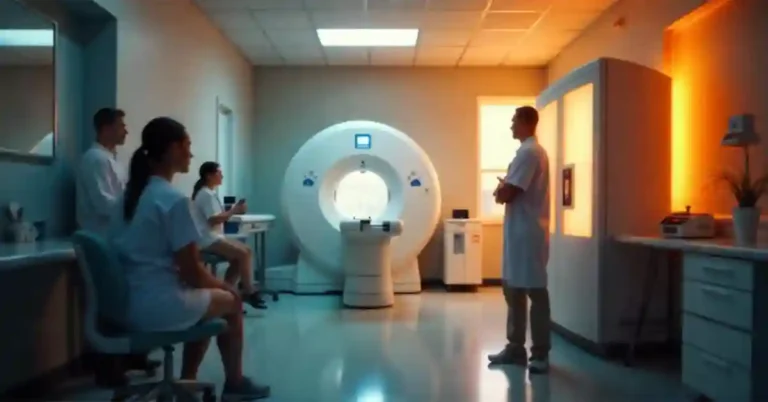Radiology is an indispensable part of modern medicine, offering critical insights that enhance patient care and outcomes. With advancements in imaging technology, the demand for skilled radiologic technologists is rapidly increasing. In South Carolina, aspiring technologists have a wonderful opportunity to receive top-tier education at AMA-approved schools of radiologic technology. These institutions not only equip students with the necessary skills but also open doors to rewarding careers in healthcare.
What makes an AMA-approved school of radiologic technology in South Carolina stand out? How does one choose the right program that aligns with their career goals and personal interests? The pursuit of excellence in radiologic technology education can be a daunting task, but it is also a crucial step towards a fulfilling career. In this article, we will explore the various aspects of these programs, from their unique features to the diverse opportunities they present for aspiring technologists.
Deciding to pursue a career in radiology is a significant decision with profound implications. It promises a stable future, job satisfaction, and the chance to make a real difference in patients’ lives. By the end of this article, you will not only understand the core attributes of AMA-approved schools in South Carolina but also feel inspired to take the next step in your educational and professional journey.
Understanding AMA Approval
The American Medical Association (AMA) has long been a symbol of excellence in healthcare education and practice. Schools that earn AMA approval are recognized for meeting stringent standards that ensure high-quality education and training. This approval signifies that the institution provides a curriculum that meets or exceeds national benchmarks.
AMA-approved schools offer students a well-rounded education that combines theoretical knowledge with practical skills necessary for success in the field. From understanding complex imaging techniques to mastering patient interaction, these programs cover all essential aspects of radiologic technology. Furthermore, AMA approval often implies that students will have access to cutting-edge equipment and experienced instructors, providing a comprehensive learning experience.
Choosing an AMA-approved program ensures that your education is respected and recognized by employers across the country. In a competitive job market, having credentials from a reputable institution can significantly enhance your employability and career prospects.
The Role of Radiologic Technologists
Radiologic technologists play a vital role in the healthcare system. They are responsible for operating imaging equipment, such as X-rays, MRI machines, and CT scanners, to produce images that aid physicians in diagnosing and treating medical conditions. Their expertise in capturing clear and accurate images is crucial for effective patient care.
One of the primary responsibilities of a radiologic technologist is to ensure patient safety. This includes shielding patients from unnecessary radiation exposure, positioning them correctly for imaging, and explaining procedures to alleviate anxiety. Technologists must also maintain detailed patient records and collaborate with other healthcare professionals to interpret imaging results.
The position often requires a blend of technical skill and interpersonal ability. Radiologic technologists must be adept at using sophisticated equipment while also providing compassionate care to patients who may be in distress. Thus, a comprehensive education that covers both technical training and patient interaction is essential for success in this field.
Benefits of Studying in South Carolina
South Carolina offers a unique blend of cultural richness and educational excellence, making it an ideal location for pursuing a career in radiologic technology. The state’s AMA-approved schools are renowned for their rigorous academic programs and commitment to student success.
Students in South Carolina benefit from learning in a diverse environment that combines classroom instruction with hands-on clinical experience. Many programs partner with local hospitals and clinics, providing students with real-world exposure and networking opportunities with healthcare professionals. This practical experience is invaluable for developing the skills necessary to thrive in a fast-paced medical setting.
Additionally, South Carolina’s cost of living is generally more affordable than other states, allowing students to focus on their studies without the burden of excessive financial strain. The welcoming community and pleasant weather further enhance the overall educational experience.
Choosing the Right School
Selecting the right school is a critical step in your educational journey. Several factors should be considered when evaluating AMA-approved schools in South Carolina. First and foremost, ensure that the program aligns with your career goals and offers specializations that interest you. Some schools may focus on specific areas, such as pediatric radiology or interventional procedures.
Accreditation is another key consideration. Confirm that the school is accredited by the Joint Review Committee on Education in Radiologic Technology (JRCERT), which is the gold standard for radiologic programs. Accreditation ensures that the school adheres to high academic and clinical standards.
Lastly, consider the support services and resources available to students. Does the school offer career counseling, mentorship programs, or opportunities for research and professional development? These elements can significantly enhance your educational experience and prepare you for a successful career.
Curriculum Highlights
AMA-approved schools in South Carolina offer a comprehensive curriculum designed to prepare students for a wide range of roles within radiologic technology. Courses typically cover subjects such as anatomy, patient care, radiation physics, imaging techniques, and equipment operation.
Students will also engage in rigorous clinical training, where they apply classroom knowledge to real-world scenarios under the supervision of experienced technologists. This hands-on experience is crucial for developing confidence and competence in using medical imaging equipment safely and effectively.
Furthermore, many programs emphasize the importance of soft skills, such as communication and critical thinking, which are essential for interacting with patients and collaborating with healthcare teams. By the end of their studies, graduates are well-equipped with the technical and interpersonal skills needed to excel in various healthcare settings.
Career Opportunities
Graduating from an AMA-approved school of radiologic technology opens a wide array of career opportunities. Radiologic technologists are in demand across various settings, including hospitals, outpatient clinics, diagnostic laboratories, and specialized imaging centers.
In addition to traditional roles, radiologic technologists may also pursue careers in specialized fields such as mammography, cardiovascular imaging, or nuclear medicine. These specialties often require additional certification or training, but they offer the potential for increased job satisfaction and higher earning potential.
The healthcare industry continuously evolves, presenting new opportunities for radiologic technologists to advance their careers. With experience and further education, technologists can move into leadership roles, such as department managers or educators, or transition into related fields like medical sales or equipment development.
Networking and Professional Growth
Joining professional organizations is an excellent way for radiologic technologists to continue learning and growing throughout their careers. Organizations such as the American Society of Radiologic Technologists (ASRT) offer valuable resources, including access to continuing education, certification programs, and professional networking events.
Attending conferences and workshops can also provide insights into the latest advancements in imaging technology and allow technologists to connect with peers and industry leaders. These interactions foster collaboration, innovation, and a sense of community within the field.
For students and new graduates, building a strong professional network can be instrumental in securing job opportunities and advancing their careers. Engaging with mentors and participating in internships or volunteer work are effective ways to gain experience and make meaningful connections.
Challenges and Solutions
While pursuing a career in radiologic technology can be highly rewarding, it is not without its challenges. Technologists often work in fast-paced environments that require precision, quick decision-making, and the ability to handle stressful situations.
Balancing patient care with the technical demands of the job can be challenging, especially for new graduates. However, schools often provide support through mentorship programs and clinical training that build confidence and competence.
Additionally, the rapid advancement of imaging technology requires technologists to stay current with industry trends and continuously update their skills. Many schools and professional organizations offer courses and resources to help technologists keep pace with these changes.
Financial Considerations
Financing education is a significant consideration for many students. Fortunately, AMA-approved schools in South Carolina often offer various forms of financial aid, including scholarships, grants, and loans. Prospective students are encouraged to explore these options and speak with financial aid advisors to understand their eligibility and the application process.
Additionally, some healthcare facilities offer tuition reimbursement programs for employees who pursue further education, which can be a valuable resource for technologists seeking to advance their careers.
By carefully planning and utilizing available resources, students can manage their educational expenses and focus on achieving their career goals.
Future Trends in Radiology
The field of radiology is continuously evolving, driven by technological advancements and growing demand for medical imaging services. Emerging technologies, such as artificial intelligence and machine learning, have the potential to revolutionize the way images are captured and interpreted.
These advancements could lead to faster, more accurate diagnoses and improved patient outcomes. Radiologic technologists must adapt to these changes by pursuing ongoing education and training in new technologies and practices.
Staying informed about industry trends and participating in professional development opportunities will empower technologists to remain competitive and maximize their impact in the healthcare sector.
FAQs With Answers
What is an AMA-approved school of radiologic technology?
An AMA-approved school of radiologic technology is an educational institution recognized by the American Medical Association for meeting high standards in providing quality education and training in radiologic technology.
Are AMA-approved programs better than non-approved ones?
AMA-approved programs are generally considered superior because they meet rigorous standards set by the association, ensuring students receive a comprehensive and well-rounded education.
How long does it take to complete a radiologic technology program?
Most radiologic technology programs take about two years to complete, although the duration may vary depending on the specific program and any additional certifications or specialties pursued.
Can I work while completing my radiologic technology program?
Many students work part-time while completing their program, although it may require careful time management. Clinical rotations and coursework can be demanding, so balancing work and studies is essential.
What career opportunities are available after completing a radiologic technology program?
Graduates can pursue various roles in hospitals, clinics, diagnostic labs, and imaging centers. Opportunities for specialization and advancement are also available in areas like mammography, nuclear medicine, and leadership positions.
Conclusion
Choosing to study at an AMA-approved school of radiologic technology in South Carolina is a significant step toward a fulfilling career in healthcare. These institutions offer comprehensive education, hands-on training, and valuable networking opportunities that pave the way for success. The demand for skilled radiologic technologists is growing, and by investing in your education, you position yourself to make a meaningful impact in the lives of patients and communities. Whether you’re just starting or looking to advance your career, the opportunities are boundless. Take the next step today and explore the potential of a career in radiologic technology.






